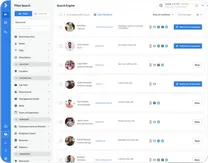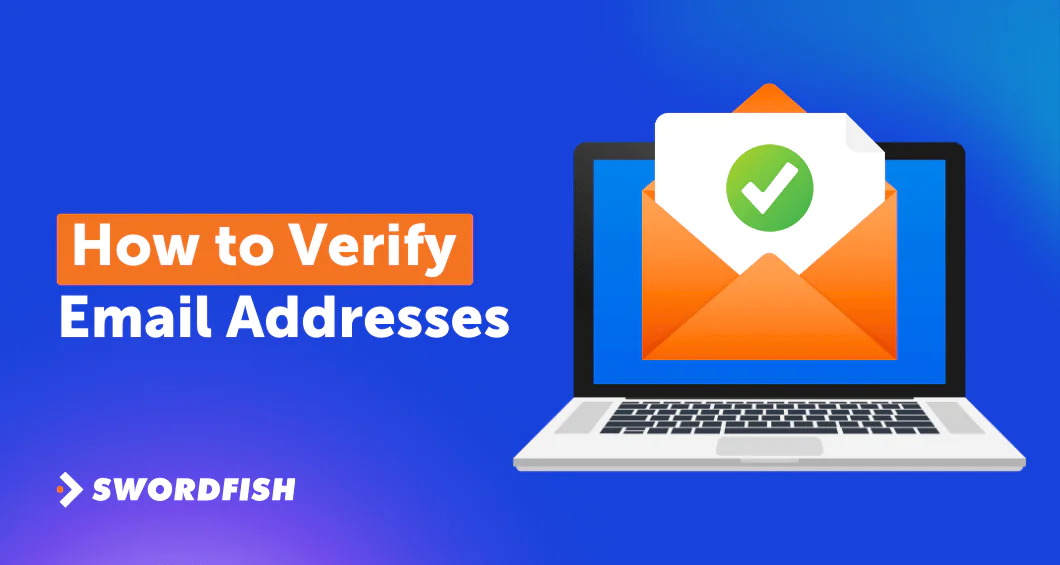
Do you ever wonder if that email you just received is real or fake? Or fed up with emails that seem to disappear without a trace? The solution is learning how to verify email addresses. It’s a must for clear and successful online communication.
To verify email, use tools like Swordfish AI or manual checks like DNS lookup, structure analysis, and server pinging. It’s important for maintaining an updated list, protecting email reputation, and reducing bounces. Plus, regular verification is advised for new lists, rising bounce rates, and routine maintenance.
Next up, we’ll show you easy yet powerful ways to check email addresses. You’ll learn how to verify emails and also get tips on keeping your email list current and your communication on point.
So, let’s improve your email approach!
What is Email Verification?
Email verification is the process of checking if an email address is valid and active. It checks if the email exists, is in use, and belongs to a person. This reduces the chances of your emails not being delivered and ensures they reach actual people.
It’s a useful tool for keeping your email list accurate and useful, especially for marketing, staying in touch, or other business needs. The main reasons for doing this are:
- To make sure the email addresses are correct, valid, and in use.
- To help your emails actually reach real, active email accounts.
When you verify emails, you reduce the risk of sending emails to non-existent or spam addresses. This increases the effectiveness and trustworthiness of your cold-email campaigns.
Additionally, it improves your connection with your audience and enhances your email marketing by maintaining a clean email list.
Why Should You Verify an Email Address?
Email verification is key to making sure your emails actually reach people. It helps you in the following ways —
Keep Your Email List Up-to-Date
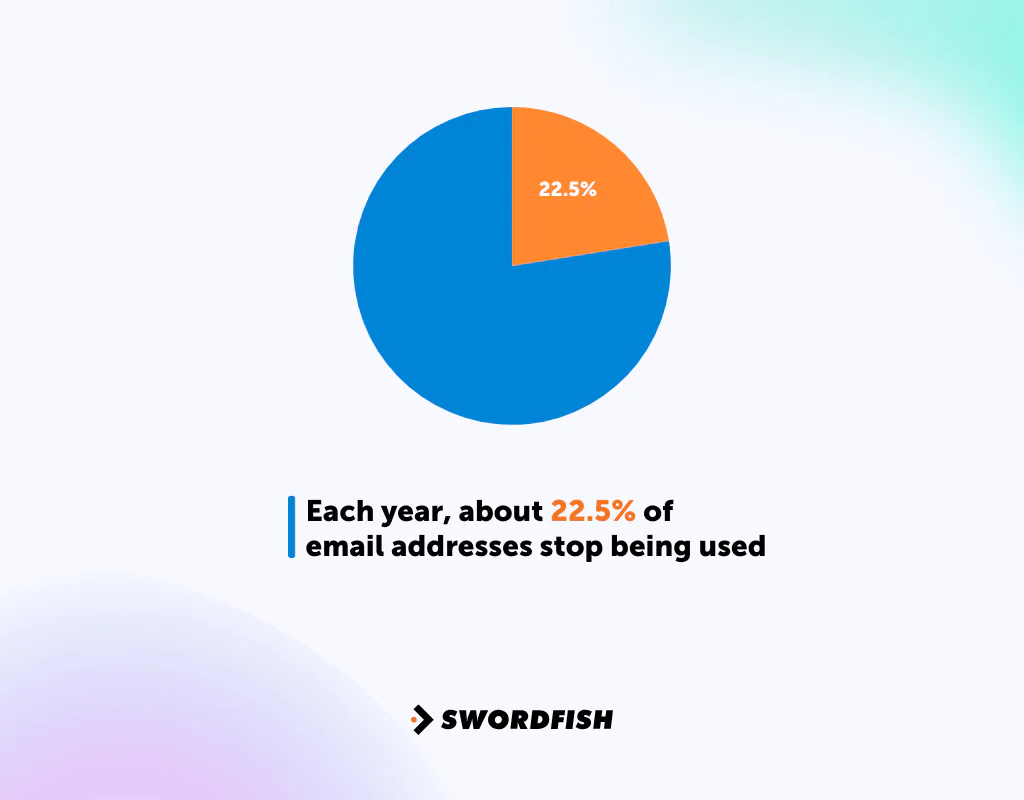
It’s important to check your email list regularly. Each year, about 22.5% of email addresses stop being used because people change jobs or close their accounts. By checking your list often, you can remove these out-of-date emails.
It not only helps your emails get to active users but also lowers the chance of many emails not being delivered, which can hurt your email campaigns.
Protect Your Email Reputation
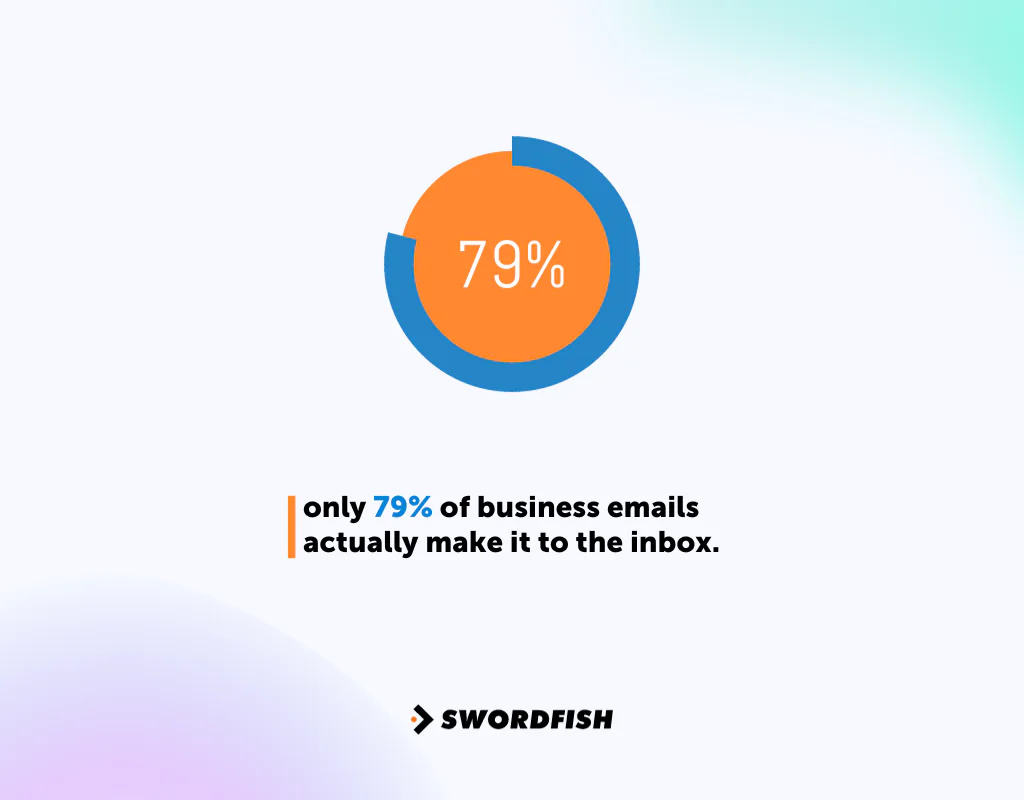
According to Return Path, only 79% of business emails actually make it to the inbox. So, maintaining your email reputation is a huge factor. Now, your email reputation depends on things like —
- How many of your emails are opened
- If people mark them as spam
- How often you send emails
Using a good email verification method helps reduce undelivered emails and spam complaints.
It’s important because a good reputation means your emails are more likely to get into people’s inboxes. Regularly checking and updating your email addresses is a smart way to keep a good reputation and make sure your audience sees your emails.
Reduce Hard Bounces
Hard bounces happen when you send emails to addresses that don’t exist or are wrong, and these emails return to you.
Too many hard bounces can make internet service providers (ISPs) think your emails are spam. It can affect even your emails to valid addresses.
By using email verification to confirm email address accuracy before you send a campaign, you can lower the chance of hard bounces. It helps make sure your emails actually get to the people you’re sending them to.
Keep Your Sender Reputation Strong
It’s important to have a good reputation as an email sender so your emails don’t get blocked.
If too many of your emails don’t get delivered (this is called a high bounce rate), it looks bad for you. Email services keep an eye on this and might think you’re a risky sender if it happens a lot.
They might even block your account, making it hard for your emails to get through. By regularly checking who you’re sending emails to, you can make sure they’re going to real people.
This keeps your bounce rate low and helps you stay trusted by email providers.
How to Verify an Email: 7 Different Approaches
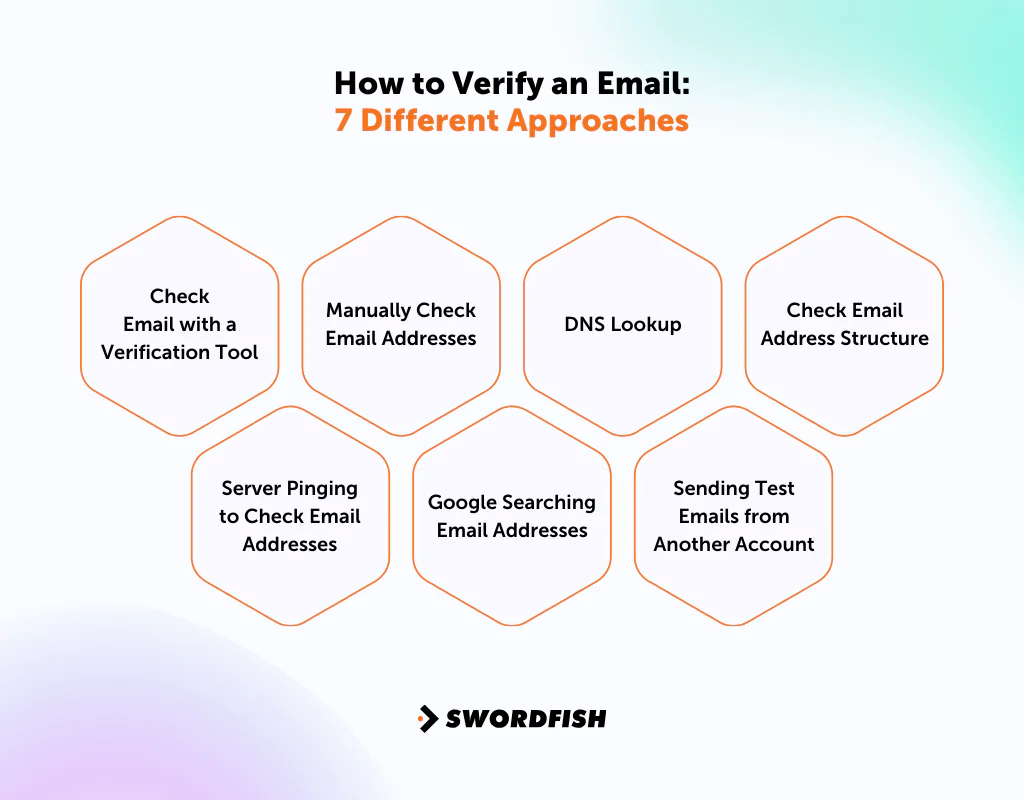
If you’re wondering how to check email addresses, well, there are a few methods you can use. However, each method differs in how much effort it takes and how well it works. Here are some options:
Check Email with a Verification Tool
For quick and easy email verification, especially in large numbers, an email verification tool is your best bet. These tools automatically check for issues like —
- Invalid mailboxes, which might be out of date or entered wrong.
- Non-existent domains, meaning the email’s domain is either fake or no longer active, leading to email bounces.
- Spam traps detect poor emailing practices and block them.
- Mistakes in how the email address is written, often from typos.
Although you can find free versions of email checking tools, they usually have a limit on how many emails you can verify.
If you need to check a large number of emails, it’s a good idea to use a paid email verification service. These services can handle checking lots of emails at the same time and provide more detailed results.
Manually Check Email Addresses
When you need to check an email address, manual verification is a useful choice. You can use free online email verifier tools for this. These tools let you check if an email address is valid without having to send a test email.
Here’s a simple process to follow —
- Visit a reliable email verification website.
- Input the email address you want to verify.
- The tool will quickly indicate whether the email is ‘Deliverable’ (valid) or ‘Undeliverable’ (invalid).
This method is ideal for verifying a small batch of emails. It’s quick, cost-free, and provides immediate results, eliminating the need for automated tools designed for larger volumes of emails.
DNS Lookup
DNS lookup is a way to find out which email server a domain uses. Think of it as asking for directions to the right email server for a specific website or company. Here’s how you can do it:
- Go to a site like DNS Checker on your web browser.
- Type in the domain name you’re curious about, like “example.com,” into the box provided.

- You can also select record type or just select ‘All’.

- Finally, press ‘Lookup DNS’
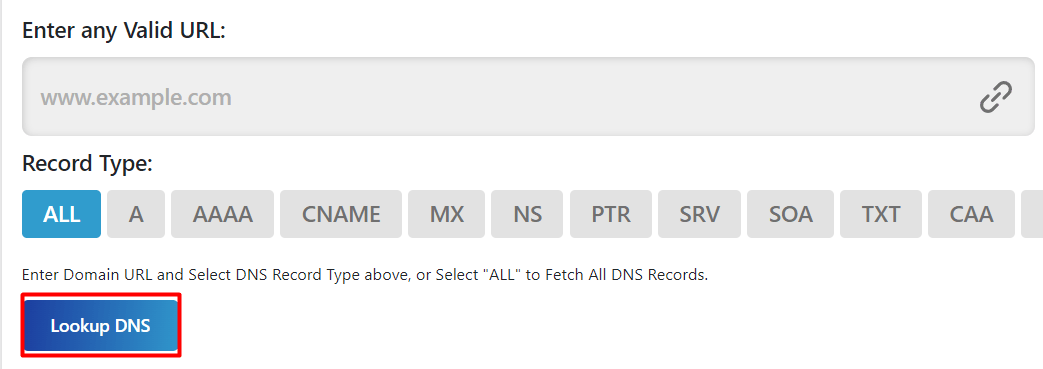
If you don’t find any information for the domain, it probably means the domain doesn’t exist, or it doesn’t have any email setup. It’s a handy way to check if an email domain is real and active.
Check Email Address Structure
When you want to learn how to confirm an email address, it’s better to examine its structure. An email address consists of three parts:
- The unique identifier before the “@” symbol
- The “@” itself
- The domain name following it
Take “example@domain.com” as an example: “example” is the unique identifier, and “domain.com” is the domain name.
The unique part can be a mix of up to 64 letters, numbers, and special characters like “! $ # & ‘ % * – + / ? = ^ ` _ | {.” Following the “@”, the domain name typically represents the email provider, such as “@gmail.com.”
Pay attention to common errors, such as misspelled domain names (e.g., “@gmali.com” instead of “@gmail.com”). These mistakes can lead to email delivery failures. By thoroughly inspecting the structure of each email address, you can ensure they are correctly formatted and more likely to be valid.
Server Pinging to Check Email Addresses
Many people look for non-technical methods to verify if an email address is real without sending test emails. Essentially, this involves checking with the email server to see if the email address exists. Here’s how to do it in simple steps:
- Turn on Telnet: If you’re using Windows, you need to activate PuTTy on your computer. Mac users can use the iTerm app.
- Find the Mail Server: Open the command prompt (Windows) or terminal (Mac) and type: nslookup –type=mx domain.com. This will show you the Mail Exchange (MX) records for the domain.
- Choose a Mail Server: Look at the MX records and pick the one with the smallest preference number.
- Connect to the Server: Use the command: telnet {mail server address} 25 to connect to your chosen mail server.
- Start a Handshake: Type HELO to begin communicating with the server.
- Introduce Yourself: Enter: mail from: {any email address} to tell the server who you are.
- Verify the Email: Type: rcpt to: {email address you’re checking}.
The server will respond and tell you if the email address is valid. An “OK” means it’s valid, while an error message suggests it might not be. This method is good for technically confirming email addresses.
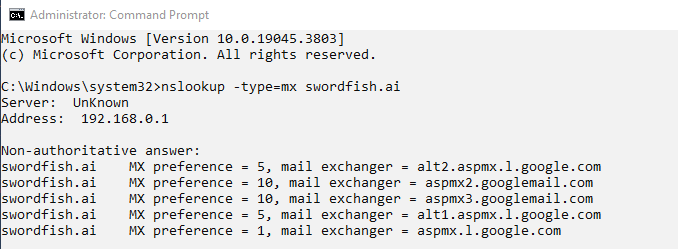
Google Searching Email Addresses
One straightforward method to check if an email address is real is by searching for it on Google. People often post their emails on websites, forums, or social media, which Google indexes. If the email appears in your search results, it’s likely valid.
However, this technique isn’t foolproof. Google may not always accurately associate an email with the correct individual. Plus, finding an email in search results doesn’t guarantee it’s currently active.
This approach is useful for a quick check of a few email addresses but isn’t efficient for larger lists.
Sending Test Emails from Another Account
If you want to check if an email address works, you can send a test email. But be careful not to use your main email for this, as it might affect how email providers view your trustworthiness as a sender.
A safer strategy is to use a different email account for these tests. This lets you check if emails are being delivered without risking your main email account.
Using this approach is good for checking your email list and finding out which emails aren’t active anymore. However, it takes a lot of time.
You have to send out emails one by one and keep track of the replies, and this can become tiresome when you have a lot of emails to deal with.
When to Verify an Email List?
When you try to find company email addresses and get them, It’s a must to check your email list to make sure all the addresses are valid. A lot of people skip this step, but if you don’t do it, you might end up with a bunch of emails that don’t get delivered. In the worst cases, this could even get your account suspended.
Here are three key times when you should check your email addresses —
Verifying a New Email List
When you get a new email list, you must verify it before launching any campaigns. New lists can have incorrect, spammy, or invalid emails. Checking the list first makes sure you’re actually connecting with real, active contacts.
Addressing Rising Email Bounce Rates
If your email bounce rates are going up, it means there’s something wrong with your email list. Ignoring this can be bad for your email account and might even lead to it getting suspended.
To fix this, you should regularly clean your email list. This means removing email addresses that don’t work or aren’t used anymore.
By making sure you only send emails to active and reachable people, you can reduce your bounce rates. This not only helps your emails get delivered better but also keeps your email account in good shape.
Regular Email List Maintenance
It’s important to regularly update your email list, as 22.5% of email lists become outdated each year. To keep your outreach effective, you should verify your email addresses every three to six months.
This routine check helps you identify and remove inactive addresses, like those of people who’ve changed jobs or closed their email accounts. Keeping your email list current maintains your credibility as a sender and helps ensure your campaigns remain successful.
Regularly validating your email list is a key step in maintaining clear and effective communication channels.
What’s the Difference Between Email Verification and Email Validation?
People often mix up the terms ‘verification’ and ‘validation’ when talking about emails online, but they’re not quite the same.
|
Aspects |
Email Verification |
Email Validation |
|
What It Is |
Checking if an email address exists, is active, and can get messages. | The result shows if an email is good or not after it’s been checked. |
| Key Steps | Includes checking email format, email domain, and sending a test ping to the email. |
Focuses on the final result: if the email is “valid,” “invalid,” or “cannot be checked.” |
|
Why It’s Done |
To see if an email address works and can get emails. | To clearly show if an email address is good to use after it’s been checked. |
| How It’s Done | A bunch of checks to look at different parts of an email address. |
A summary of what was found from the checks done. |
|
Why It Matters |
Helps to avoid using email addresses that don’t work or are risky before sending emails. | Helps decide if an email address should be used in things like marketing or talking to customers. |
| Additional Steps | Might send a test message to the email to make sure it’s real. |
Sometimes looks at more info about the email or where it came from. |
Why Choose Swordfish AI for Email List Verification?
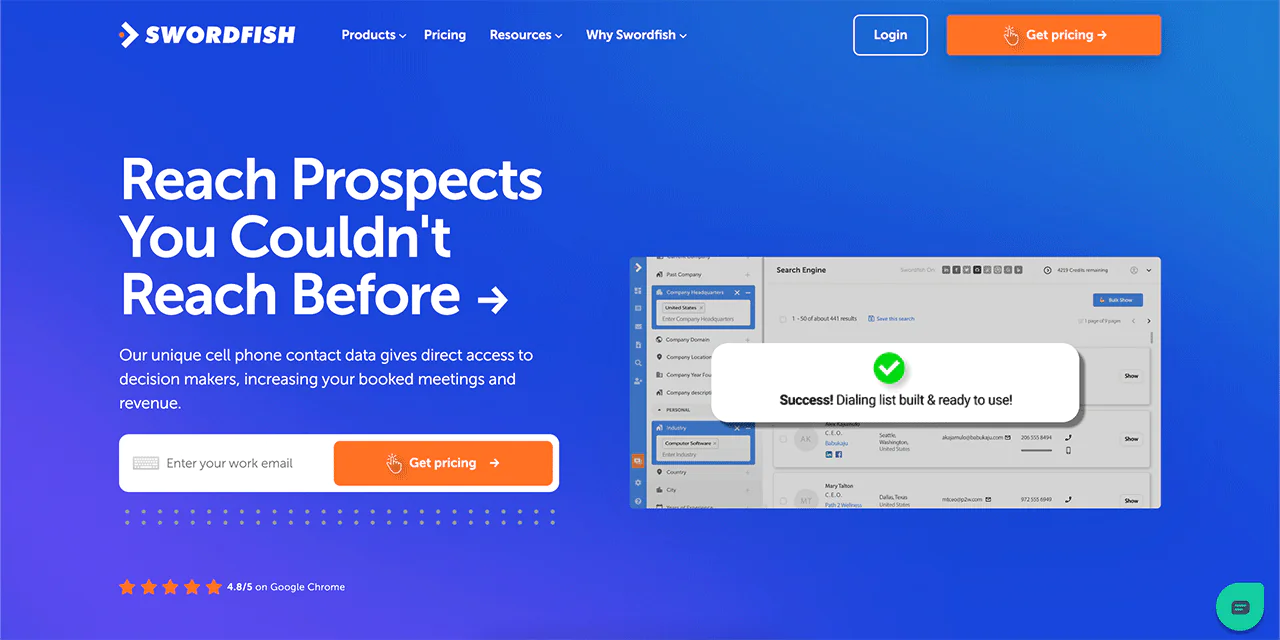
Swordfish AI is a standout tool as an effective email address lookup and locator that can verify email lists, perfect for those in sales and recruitment. Our uniqueness lies in our exclusive database of cell phone numbers and our system for checking these numbers.
This makes us a top pick for cold calling. But we’re more than just an email list checker. We’re changing the game by helping you connect directly with key decision-makers, improving the success of your outreach.
Swordfish AI focuses on giving you data that’s not only accurate but also useful. With our access to over 3.5 billion profiles, you have a wealth of information right at your fingertips. When you send emails or make phone calls, you’re really reaching potential clients or candidates.
Our platform checks contact details as they happen, making sure you’re using up-to-date and trustworthy information. To avoid missing opportunities, you need current information.
Features of Swordfish AI
Here are some of Swordfish AI’s main features —
-
Prospector Tool

Using Prospector, you can quickly put together lists for calling or emailing. It sorts and filters information so you can find exactly who you need to contact.
-
File Upload Capability
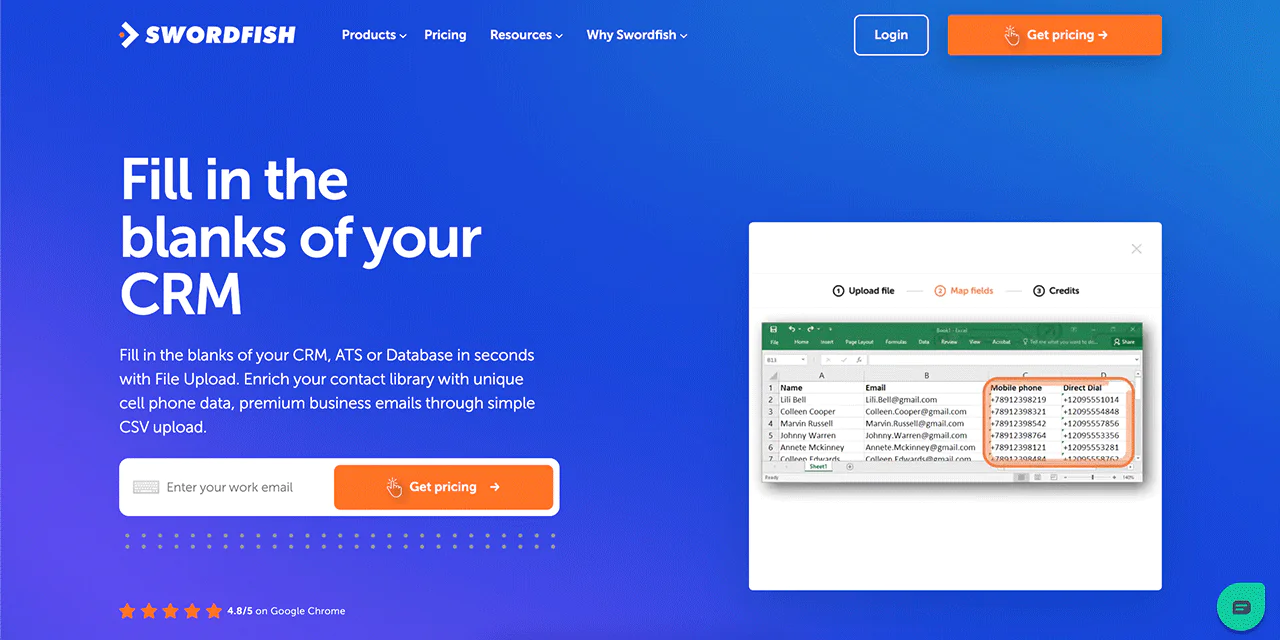
You can upload your CSV file to Swordfish, and we’ll fill in any missing phone numbers and emails. This is great for keeping your CRM database complete and up-to-date.
-
Reverse Search Functionality
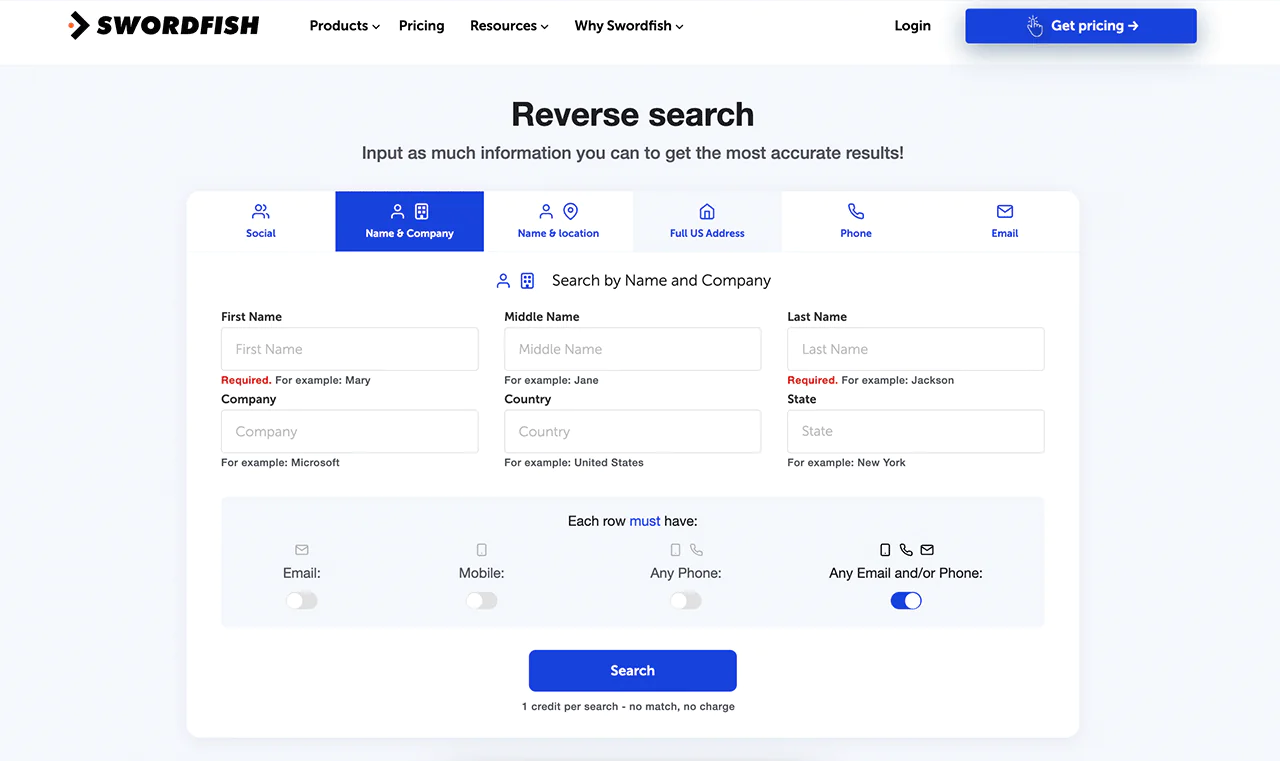
With Swordfish, you can find more information about someone using reverse search. It includes like their name, email, company, phone number, or social media profile.
-
Chrome Extension
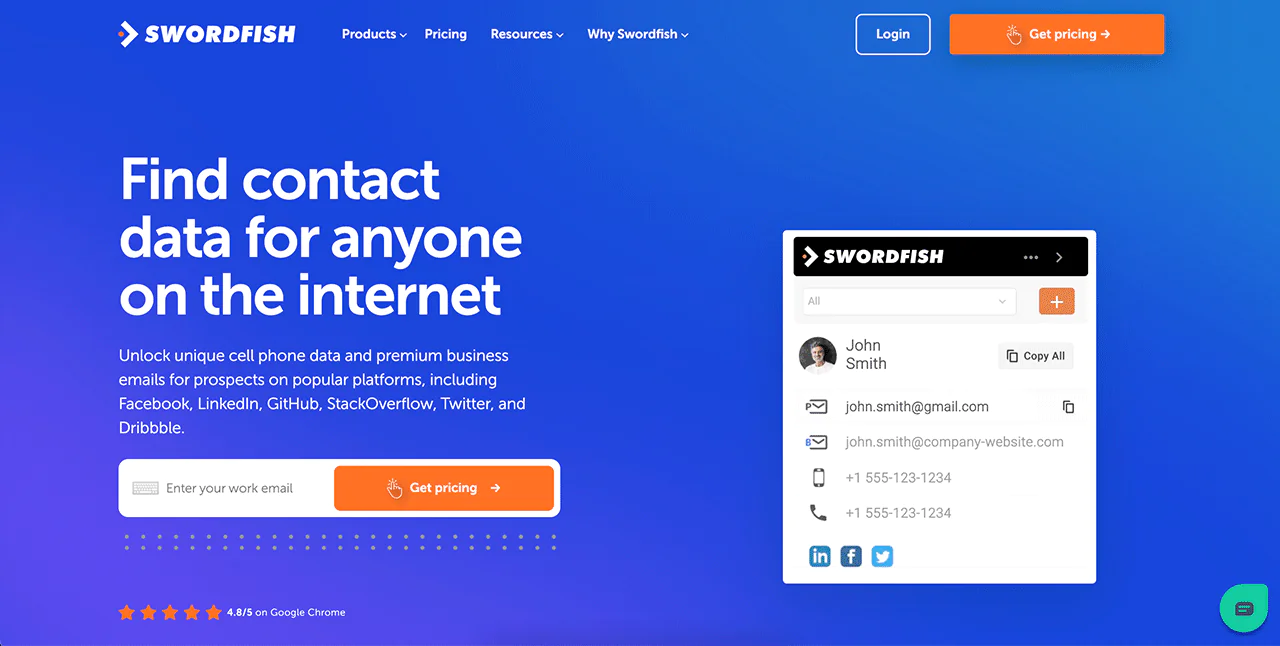
Our Chrome Extension helps you easily find contact details on sites like LinkedIn, Twitter, and Facebook. You can quickly grab and verify contact info directly in your browser
-
API Integration
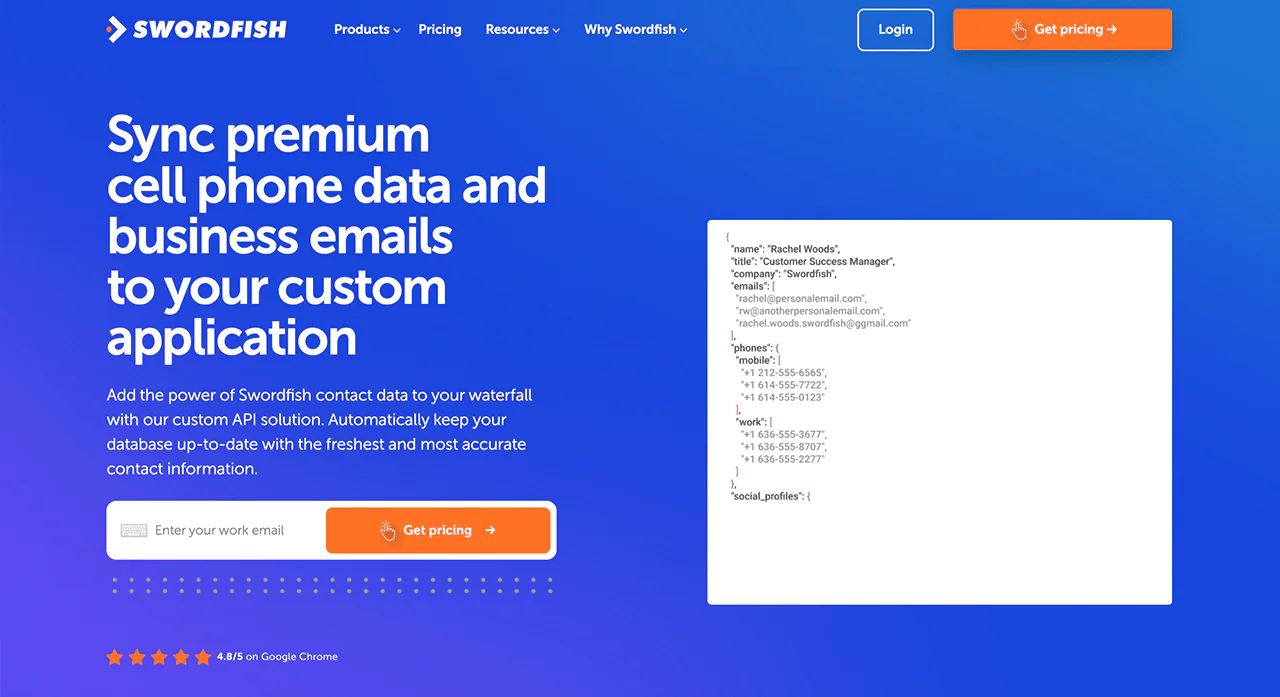
We offer API integration, so you can add Swordfish’s unique data into your own applications. This makes your existing systems even more powerful.
-
Bombora Intent Data
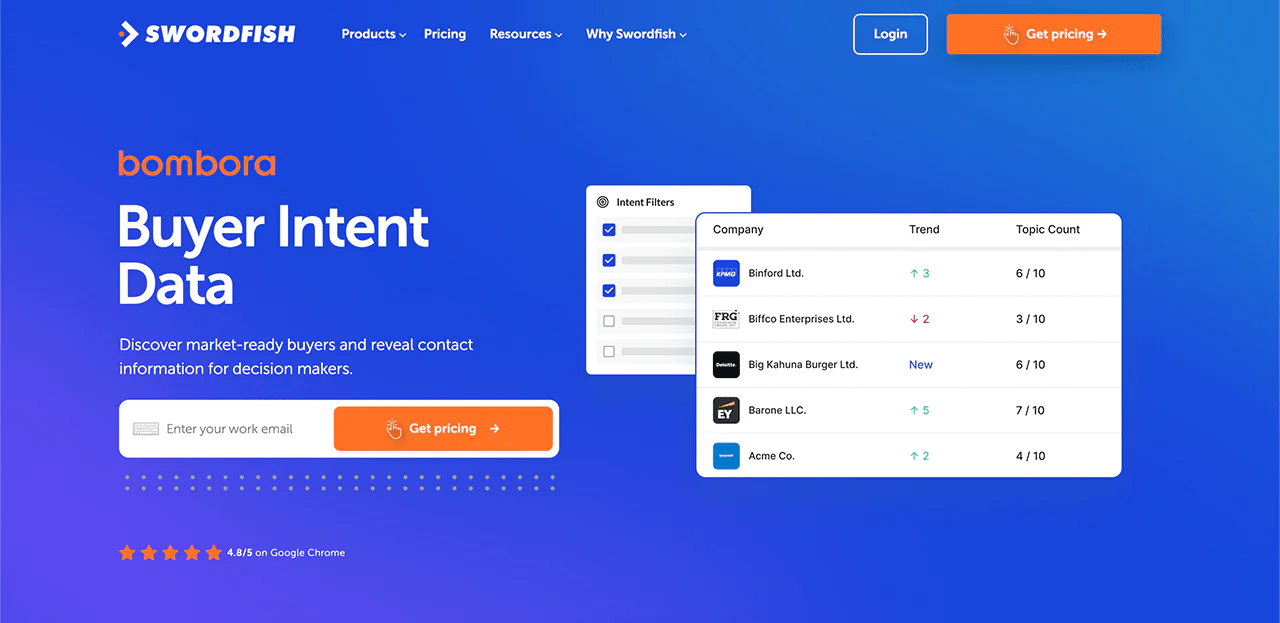
Bombora feature helps you find businesses that are ready to buy what you’re selling. It uses special data to spot potential customers who are looking for products like yours.
-
Real-Time Line Connectivity Validation
Swordfish checks phone numbers in real-time to make sure they’re working. This way, you can trust the phone numbers we provide are accurate.
Conclusion
Knowing how to verify email gives you power over your inbox. You’ve learned how to look at sender addresses, examine email headers, and do online searches. Now, you can spot whether an email is genuine or not.
Make these simple steps a habit, and you’ll be better at catching tricky phishing scams. Knowing how to tell real emails from fake ones means you can focus on important messages and steer clear of tricks meant to steal your info.
Remember, being able to tell if an email is authentic is an important skill. It protects your identity and keeps your accounts safe. Scammers are always finding new tricks, so keep sharpening your skills by using these tips often.
Want to improve your sales and recruitment? Try Swordfish AI for reliable phone and email details. Begin reaching out to important contacts today!
FAQs
Can email verification detect typos?
Yes, good email verification tools can find errors like wrong domain names and odd symbols in email usernames.
Are terms like ’email verifier’, ’email checker’, ’email validator’, and ’email tester’ all the same?
You’ll see different names like email checker, verifier, validator, or tester. They usually mean the same thing: software that checks if email addresses are valid. But, don’t confuse them with ’email spam checker’ or ’email spam tester’. These are different. Their tests look for things like blacklisted email addresses or content issues that could send your email to the spam folder, not the inbox.
Is email verification always right?
No, it’s not 100% certain. New email servers appear often, people make typos, and spam traps are common. But, using an email verifier does increase your chances of your emails reaching someone’s inbox.


 View Products
View Products


